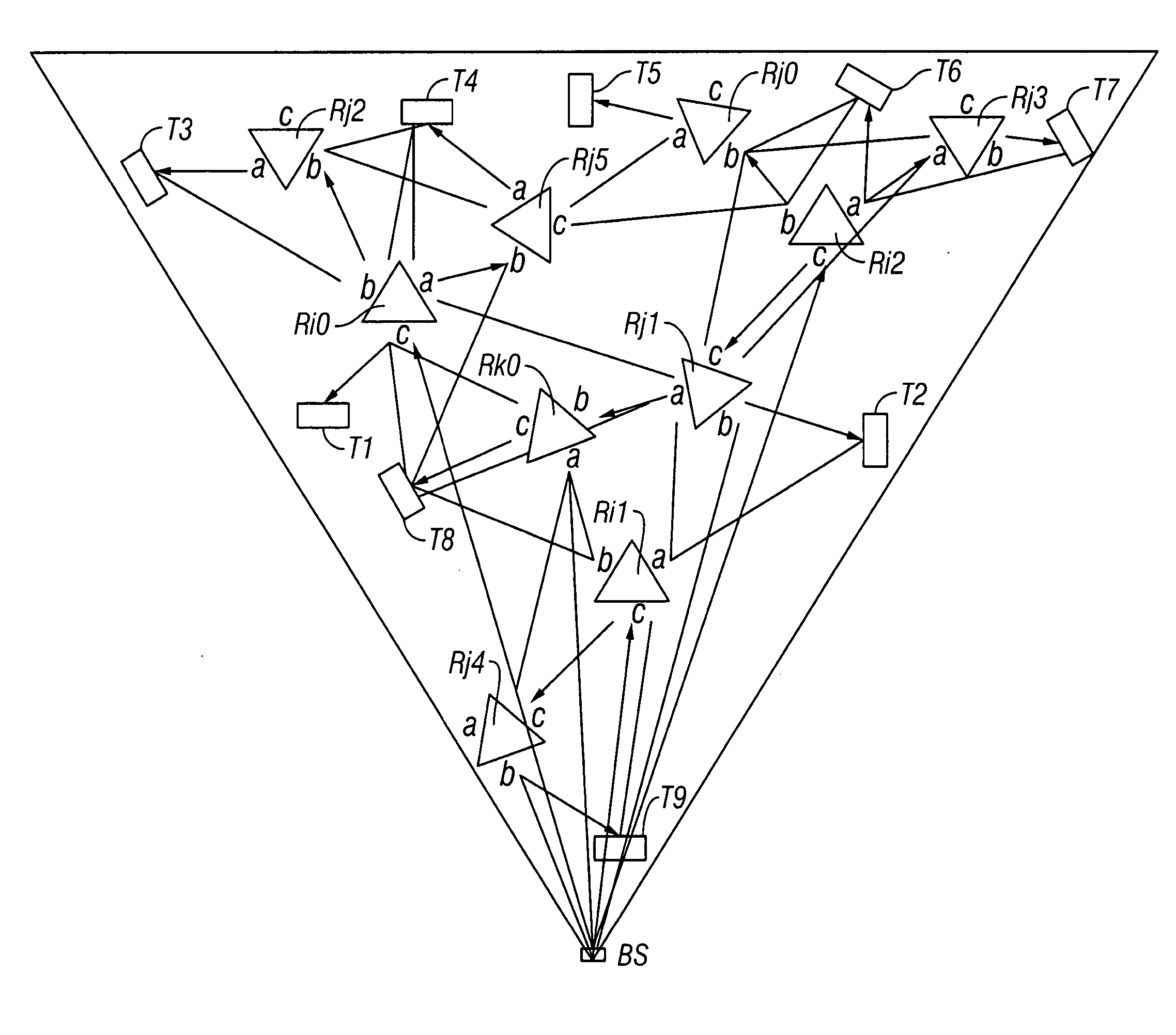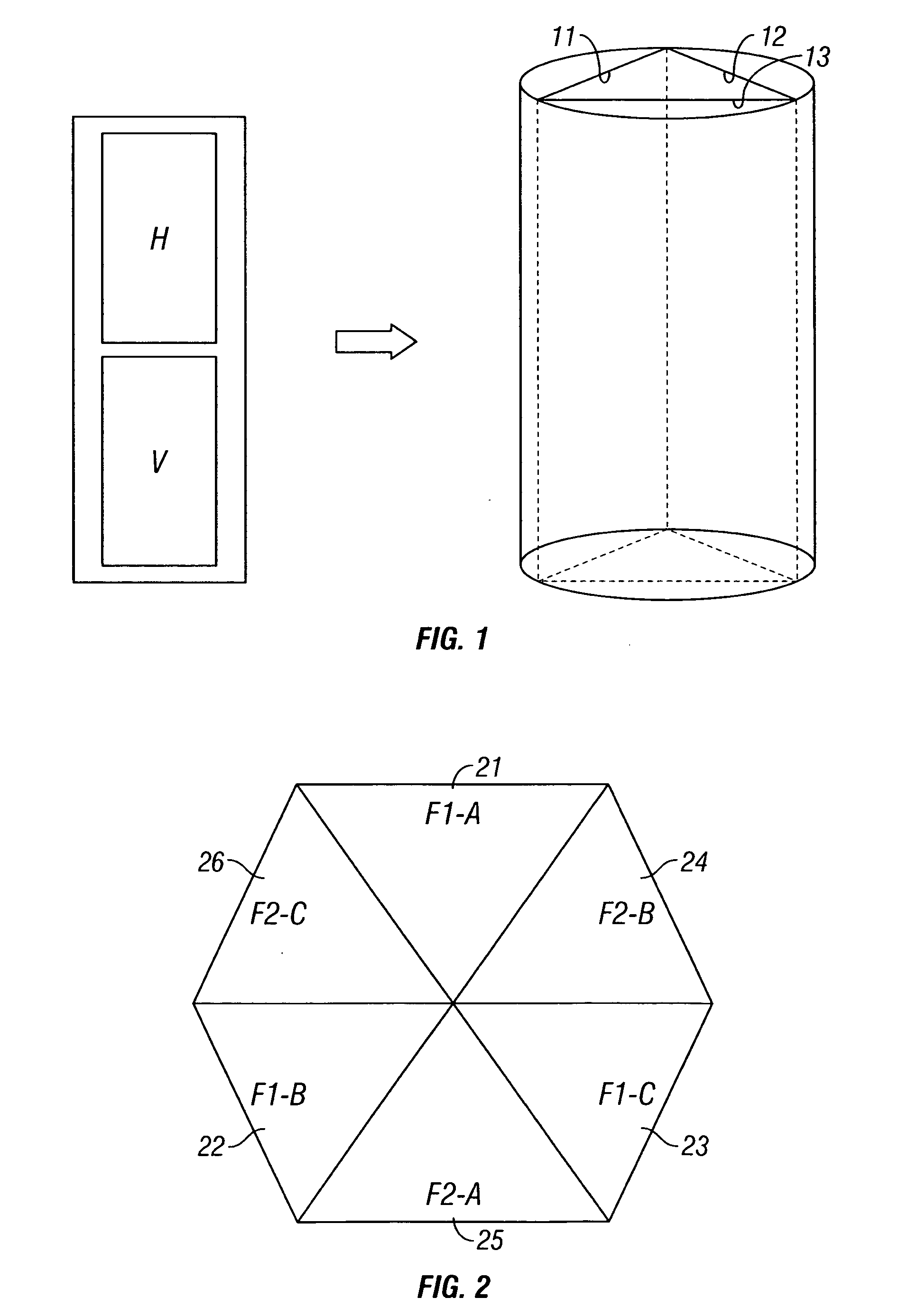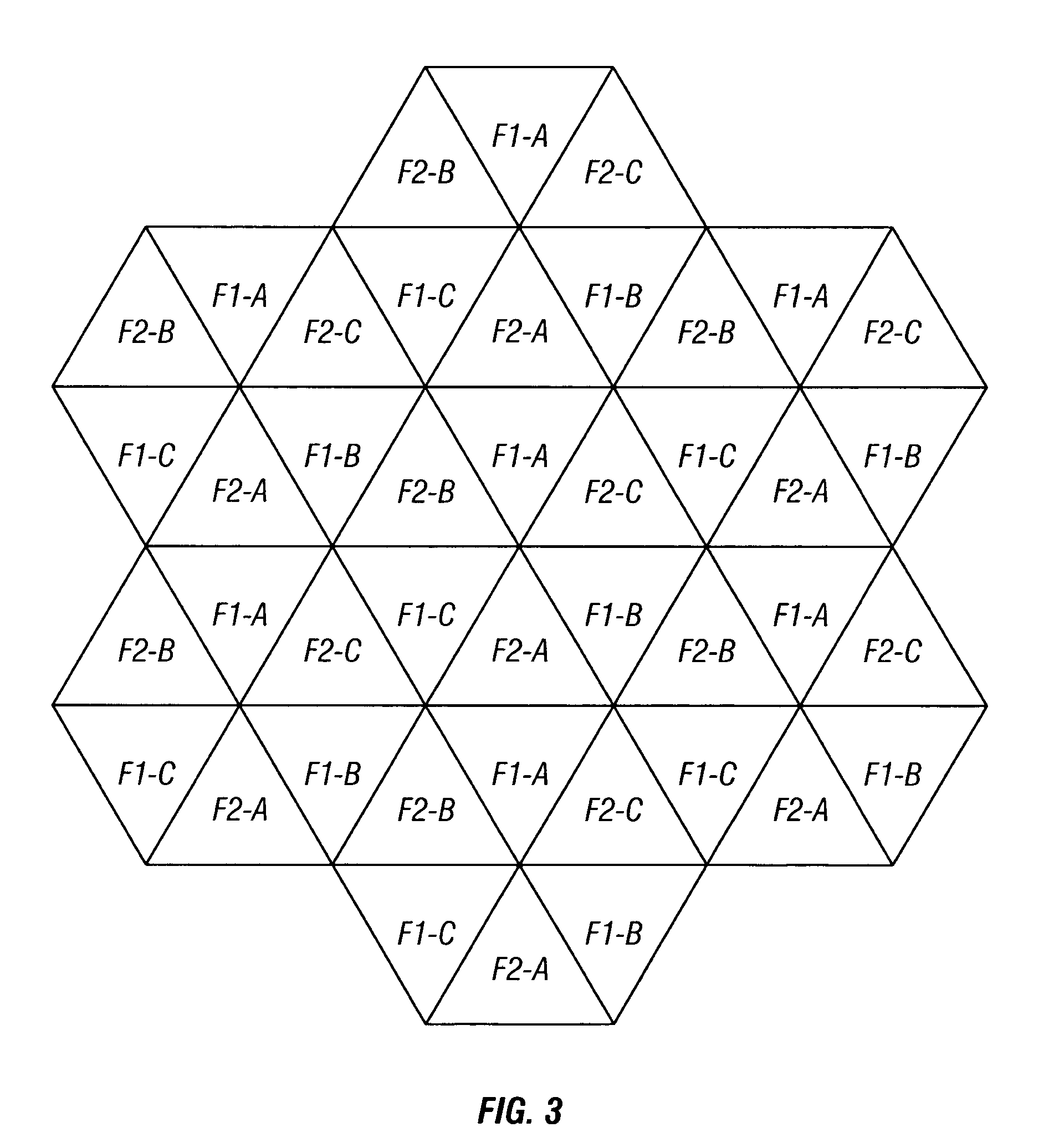Scalable broadband wireless mesh access network
a wireless mesh access network and wireless mesh technology, applied in the field of wireless networks, can solve the problems of high cost of backhaul services, base stations must be located, and inconvenient operation, and achieve the effect of high data rates
- Summary
- Abstract
- Description
- Claims
- Application Information
AI Technical Summary
Benefits of technology
Problems solved by technology
Method used
Image
Examples
example 1
FIG. 1 is a tree diagram that shows a network having eleven nodes and twenty directional links: {I0,1, I1,0, I0,2, I2,0, I1,3, I3,1, I1,4, I4,1, I2,5, I5,2, I2,6, I6,2, I2,7, I7,2, I4,8, I8,4, I5,9, I95, I6,10, I10,6}
Suppose that the set of links L0,1 that gets interference, i.e. that cannot be active while link I0,1 is active, is: L0,1={I1,0, I0,2, I2,0, I1,3, I3,1, I1,4, I4,1, I5,9, I8,4}
Similarly, suppose there are the following interference sets: L1,0={I0,1, I0,2, I2,0, I1,3, I3,1, I1,4, I4,1, I9,5, I4,8} L0,2={I1,0, I0,1, I2,0, I2,5, I5,2, I2,6, I6,2, I2,7, I7,2, I6,10} L2,0={I1,0, I0,1, I0,2, I2,5, I5,2, I2,6, I6,2, I2,7, I7,2, I10,6} L1,3={I1,3, I1,4, I4,1, I0,1, I1,0} L3,1={I1,3, I1,4, I4,1, I0,1, I1,0} L1,4={I1,4, I1,3, I3,1, I1,0, I0,1, I4,8, I8,4, I2,5, I7,2} L4,1={I1,4, I1,3, I3,1, I1,0, I0,1, I4,8, I8,4, I5,2, I2,7} L2,5={I5,2, I0,2, I2,0, I2,6, I6,2, I2,7, I7,2, I5,9, I9,5, I1,4} L5,2={I2,5, I0,2, I2,0, I2,6, I6,2, I2,7, I7,2, I5,9, I9,5, I4,1} L2,6={I6,2, I0,2, I...
example 2
Continuing with Example 1 above, the following is one possible schedule for links requesting bandwidth: S={({I5,9, I6,10, I3,1}, 10), ({I0,2}, 35), ({I2,6, I0,1}, 5), ({I2,6, I1,0}, 10), ({I2,5}, 20)}
This schedule uses 10+35+5+10+20=80 credits to satisfy 35+20+15+10+10+10+10+5=115 requested credits. The average activity concurrency is 115 / 80=1.4375.
This schedule is not necessarily the best schedule for this example. In fact, using the algorithm described in detail below, one can find a better schedule using less credits while still satisfying all bandwidth requests.
An optimal schedule must satisfy the following conditions:
For any link, granted credits equals requested credits Σljk⊂Li Gi=Rjk
Minimal total network resource spent (ΣGi)<=(ΣG′i) for ∀S′={(L′i, G′i)}
Because this problem is NP-hard, a heuristic algorithm is disclosed herein for a near optimal solution. For purposes of the discussion herein, a problem is NP-hard if an algorithm for solving it can be transla...
example 3
Use this algorithm to compute the schedule for Example 2.
Step 1 (see Table 2 below).
TABLE 2Step 1Degree of interferenceLinkα(Iij, L)Requested credit Rijα(Iij, L) * RijI0,2535175I2,532060I2,631545I1,031030I5,921020I6,1021020I3,121020I0,14520
Steps 2-5:
Get the first Schedule S={({I0,2, I5,9, I3,1}, 10)}.
Go back to step 1 (see Table 3 below).
TABLE 3Go Back to Step 1Degree of interferenceLinkα(Iij, L)Requested credit Rijα(Iij, L) * RijI0,2525125I2,522040I2,621530I1,021020I6,1021020I0,12510
Steps 2-5:
Get a revised Schedule S={({I0,2, I5,9, I3,1}, 10), ({I0,2}, 25)}.
Go back to step 1 (see Table 4 below).
TABLE 4Go Back to Step 1Degree of interferenceLinkα(Iij, L)Requested credit Rijα(Iij, L) * RijI2,512020I2,611515I1,011010I6,1011010I0,1155
Steps 2-5:
Get a revised Schedule: S={({I0,2, I5,9, I3,1}, 10), ({I0,2}, 25), ({I2,5, I1,0, I6,0}, 10)}.
Go back to step 1 (see Table 5 below).
TABLE 5Go Back to Step 1Degree of interferenceLinkα(Iij, L)Requested credit Rijα(Iij, L)...
PUM
 Login to View More
Login to View More Abstract
Description
Claims
Application Information
 Login to View More
Login to View More - R&D
- Intellectual Property
- Life Sciences
- Materials
- Tech Scout
- Unparalleled Data Quality
- Higher Quality Content
- 60% Fewer Hallucinations
Browse by: Latest US Patents, China's latest patents, Technical Efficacy Thesaurus, Application Domain, Technology Topic, Popular Technical Reports.
© 2025 PatSnap. All rights reserved.Legal|Privacy policy|Modern Slavery Act Transparency Statement|Sitemap|About US| Contact US: help@patsnap.com



